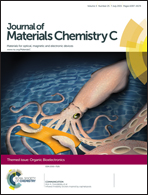Nano-bioelectronics via dip-pen nanolithography
Abstract
The emerging field of nano-biology is borne from advances in our ability to control the structure of materials on finer and finer length-scales, coupled with an increased appreciation of the sensitivity of living cells to nanoscale topographical, chemical and mechanical cues. As we envisage and prototype nanostructured bioelectronic devices there is a crucial need to understand how cells feel and respond to nanoscale materials, particularly as material properties (surface energy, conductivity etc.) can be very different at the nanoscale than at the bulk. However, the patterning of organic bioelectronic materials is often not achievable using conventional fabrication techniques, especially on soft, biocompatible substrates. Nonconventional nanofabrication strategies are required. Dip-pen nanolithography is a nanofabrication technique which uses the nanoscale tip of an atomic force microscope to direct-write functional inks. Over the past decade, the technique has evolved as uniquely capable in the realm of bio-nanofabrication, with the capability to deposit both biomolecules and electrode materials. This review highlights this new tool for fabricating nanoscale bioelectronic devices, and for enabling heretofore unrealised experiments in the response of living cells to tailored nano-environments. We firstly introduce bioelectronics, followed by a survey of different lithography methods and their use to achieve paradigmic bioelectronic architectures. We then focus on dip-pen nanolithography, highlighting the range of bioelectronic materials and biomolecules which can be deposited using the technique, as well as its demonstrated use as a lithography tool in nano-biology. We discuss the progress made towards upscaling the DPN technology towards larger areas, in particular via the polymer pen approach.

- This article is part of the themed collection: Bioelectronics

 Please wait while we load your content...
Please wait while we load your content...